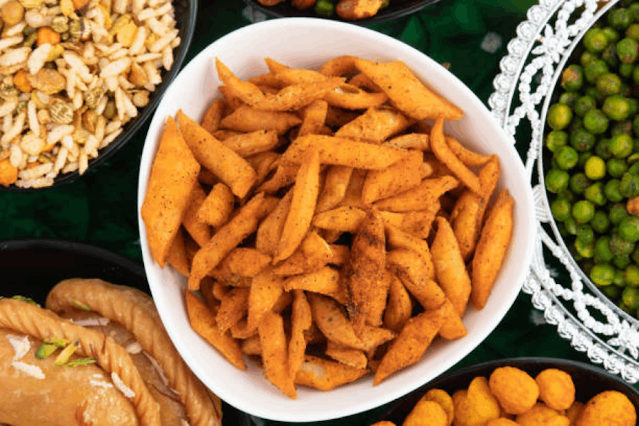Yorkshire Lamb Patties



The agricultural industry has undergone significant
technological transformation with the integration of robotics and automation.
These technologies have revolutionized modern farming practices, offering
solutions to labor shortages, improving efficiency, and enhancing crop management.
From autonomous tractors to robotic harvesters and weed-control robots,
automation is reshaping how crops are cultivated, maintained, and harvested.
This article delves into the role of robotics and automation in modern farming,
highlighting their benefits, applications, and potential to drive sustainable
agricultural practices.
Autonomous Tractors: Precision and Efficiency
Autonomous tractors are a prime example of how automation is
reshaping farming practices. These vehicles are equipped with GPS, sensors, and
advanced navigation systems, enabling them to operate without human
intervention. Their benefits include:
Precision Farming: Autonomous tractors can follow
pre-determined routes with high accuracy. This precision allows for uniform seed
planting, fertilization, and pesticide application, leading to optimized
resource utilization and consistent crop growth.
Reduced Labor Dependency: With autonomous tractors,
labor-intensive tasks such as plowing, tilling, and planting can be accomplished
without manual labor, reducing the need for a large workforce during peak
farming seasons.
24/7 Operations: Autonomous tractors can work day and night,
depending on weather conditions and task requirements, optimizing the use of
daylight hours and increasing overall productivity.
Robotic Harvesters: Enhancing Efficiency and Yield
Robotic harvesters are designed to automate the process of
picking fruits, vegetables, and other crops. These robots use computer vision,
sensors, and algorithms to identify ripe produce, handle delicate fruits, and
optimize the harvesting process. Their advantages include:
Labor Savings: Picking crops by hand is a labor-intensive
process that requires a significant workforce. Robotic harvesters reduce the
reliance on manual labor, addressing labor shortages and minimizing the costs
associated with hiring and training seasonal workers.
Faster Harvesting: Robotic harvesters can work continuously
and at a consistent pace, which can result in faster and more efficient
harvesting compared to human labor.
Reduced Crop Damage: These robots are designed to handle
crops gently and with precision, minimizing the risk of bruising or damaging
the produce during the harvesting process.
Weed-Control Robots: Precise and Environmentally Friendly
Weed-control robots are equipped with cameras, sensors, and
artificial intelligence algorithms to identify and target weeds. They can apply
herbicides precisely to individual plants, minimizing the need for widespread
chemical application. Their benefits include:
Selective Weed Management: Weed-control robots can
distinguish between crops and weeds, allowing for targeted herbicide
application. This selective approach reduces herbicide use, minimizes soil and
water contamination, and promotes environmental sustainability.
Reduced Herbicide Resistance: Precision application of
herbicides by robots can help reduce the development of herbicide-resistant
weed populations, which has become a significant concern in modern agriculture.
Labor and Time Savings: Manual weeding can be
labor-intensive and time-consuming. Weed-control robots automate this process,
saving both time and human labor.
Benefits of Robotics and Automation in Farming
Labor Efficiency: One of the primary advantages of
automation in farming is reduced dependence on manual labor. This is
particularly important in regions facing labor shortages or in situations where
hiring seasonal workers is challenging.
Precision Agriculture: Robotics and automation enable
precise and consistent application of inputs such as fertilizers, pesticides,
and herbicides. This precision minimizes waste, optimizes resource utilization,
and promotes sustainable practices.
Increased Productivity: Automation allows for continuous
operations, even during non-daylight hours. This consequences in increased
productivity and more efficient use of time.
Data-Driven Decision-Making: Many robotic systems are
equipped with sensors that collect data about soil conditions, crop health, and
other factors. This data can be used to make informed decisions about
irrigation, pest management, and other agronomic practices.
Reduced Environmental Impact: Selective application of
inputs and targeted operations, as enabled by automation, reduce the
environmental footprint of farming by minimizing chemical usage and resource
wastage.
Challenges and Considerations
While the benefits of robotics and automation in farming are
evident, there are challenges that need to be addressed:
Initial Investment: Implementing robotic and automated
systems requires an initial financial investment that might be a barrier for
some farmers, particularly smallholders.
Technical Expertise: Operating and maintaining complex
robotic systems requires specialized knowledge and training. Ensuring that
farmers have access to the necessary technical support is essential.
Integration with Existing Systems: Integrating robotic
systems with existing farming practices and infrastructure might require
adjustments and adaptations.
Data Management: Robotic systems generate a significant
amount of data. Efficient data management and analysis are crucial to
extracting meaningful insights from this data.
Regulatory and Safety Concerns: As automation becomes more
prevalent in agriculture, regulatory frameworks need to address safety
standards, liability issues, and potential impacts on employment.
Conclusion
The integration of robotics and automation in modern farming is transforming the way crops are cultivated, maintained, and harvested. Autonomous tractors, robotic harvesters, and weed-control robots are revolutionizing the agricultural landscape by reducing the need for manual labor, improving efficiency, and promoting precision agriculture. These technologies contribute to sustainable and resource-efficient practices, address labor shortages, and enhance overall crop management. As skill continues to advance and adoption becomes more widespread, the agricultural industry is poised to benefit from increased productivity, reduced environmental impact, and enhanced food security.